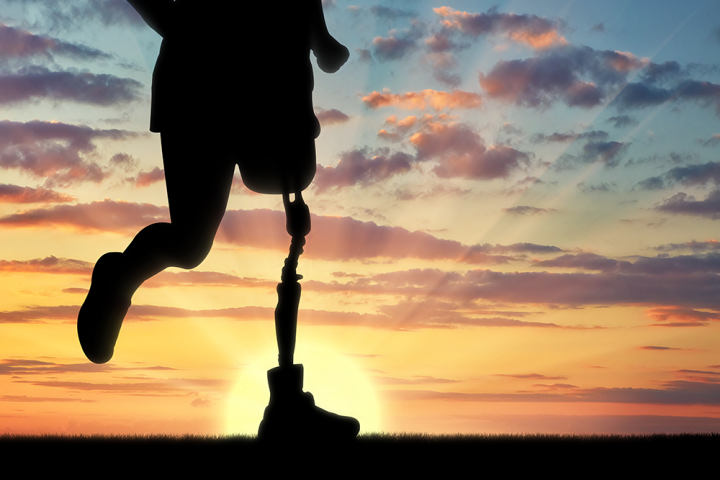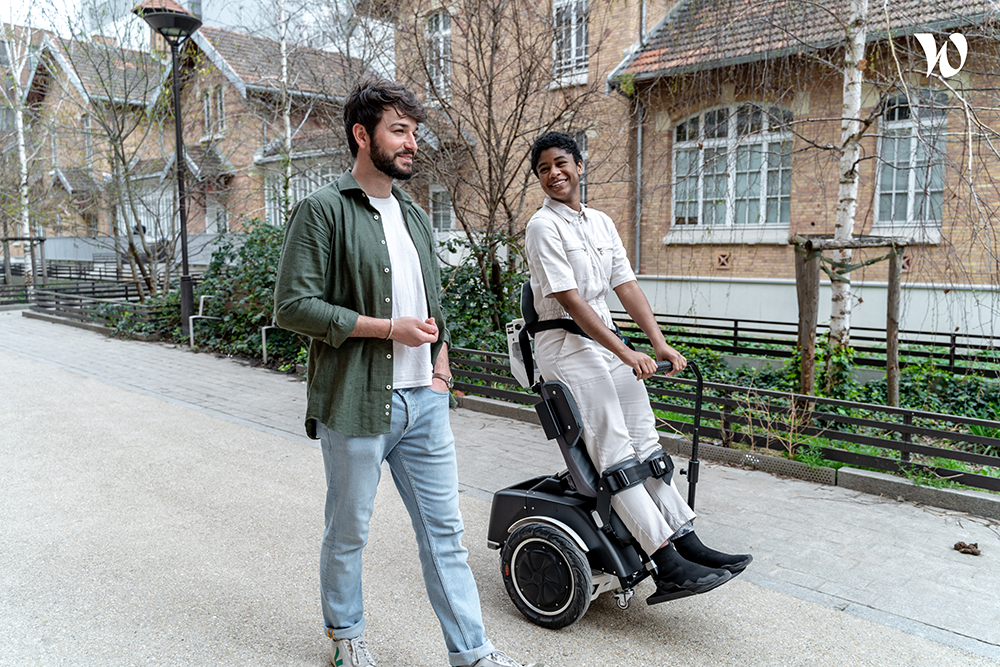
Polymers that make everyday life easier
Improving the lives of people living with disabilities does not necessarily require technological feats orchestrated by doctors in physics or materials science. Many companies innovate and regularly put objects on the market designed to simplify the daily lives of people with disabilities. From the kitchen to the bathroom, all living spaces are concerned, and plastics play a decisive role. For example, there are bathtubs with doors that are moulded entirely in polyester. In the kitchen, cutlery and saucepans have been reinvented with ABS-coated or even silicone-coated handles to provide better grip.
|
A Czech company has designed a small car with a front door and a ramp to enable wheelchair users to become more independent. The driver can enter and operate the car without leaving the wheelchair. The car has a small engine so it can be driven without a licence. However, a small engine usually means relatively low power. |

A disabled person can get into this small vehicle and drive it without leaving their wheelchair. |
To compensate for this in order to be able to transport a disabled person, a passenger and a few hundred kilos of luggage, the interior fittings and bodywork are made of polymers. Polymers are used not only because of their low weight, but also because they are strong enough to meet safety standards and allow for all kinds of inventiveness in terms of design.
Plastics keep it rolling!
Although wheelchairs are not luxury items in rich countries, this is less true elsewhere. Don Schoendorfer, an American engineer, recounts how, during a trip to Morocco, he was shocked by the sight of a disabled woman dragging herself along a dirt road. He later discovered that more than 75 million people in the world needed a wheelchair but were unable to afford one. 22 years ago, he decided to found the NGO Free Wheelchair Mission and designed a first generation of inexpensive, comfortable and extremely strong wheelchair. Made from a garden chair made of polypropylene, a strong and inexpensive plastic, it can comfortably seat people of different sizes, is recyclable, can be hosed down, and is easy to manufacture.

The NGO Free Wheelchair Mission designs, builds and distributes cheap but strong and comfortable wheelchairs for the poorest people. |
All-terrain ATV tyres made of butyl rubber, silicone and polyamide allow the wheelchair to traverse rough, rocky and muddy terrain. It also has a polypropylene footrest that can be adjusted to suit the size and disability of the owner, and a cushion made of foamed polymers, often polyurethane, for comfort and to prevent pressure sores. A tubular steel frame holds it all together. |
|
This wheelchair, named GEN_1, has since been replaced by two new models, GEN_2 and GEN_3, also developed by the NGO.
|

|
Some companies are looking to revolutionise the wheelchair and even replace it with a much more advanced technology inspired by gyropods, those odd two-wheeled electric machines. They are intended solely for people with paralysis of the lower limbs and have the advantage of offering two positions: one seated as in a traditional wheelchair, the other standing up to be able to have a discussion without raising the head, for example, or simply to pick up an object at a height without having to ask for assistance. They therefore allow paraplegics to lead an almost normal life. Particular attention has been paid to the seating system so that the user is perfectly supported while standing, sitting and rolling. It almost looks like the bucket seat of a luxury sports car, with hip restraints, knee restraints and a leg support system, all encased in polymer foam. The seat can be used indoors or outdoors and is covered with a synthetic textile fabric such as polyamide, a material that is perfectly resistant to rain.

The French company Gyrolift has reinvented the concept of the wheelchair by using gyropod technology |
Stand up and walk!
Exoskeleton technology is being used to give people with paralysed legs the ability to walk. While military models are designed to help able-bodied people carry heavy loads, exoskeletons for medical use are used to keep people with inert leg muscles upright and prevent them from falling. To do this, they have to be adapted to the morphology of the lower limbs and pelvis while guaranteeing a high level of comfort.

Exoskeletons can enable paraplegics to walk again. To be comfortable, they are filled with different polymer foams. |
Although the robotic parts are made of metal, they are all lined with different polymer materials that are more or less foamed depending on the points of contact with the body. The upper body is pressed against a very rigid backrest covered with a polyethylene-based foam, for example, the same as that used for gymnastics floor mats. Some rehabilitation centres are already using them and designers are constantly seeking to develop much cheaper models for everyday use.
|


